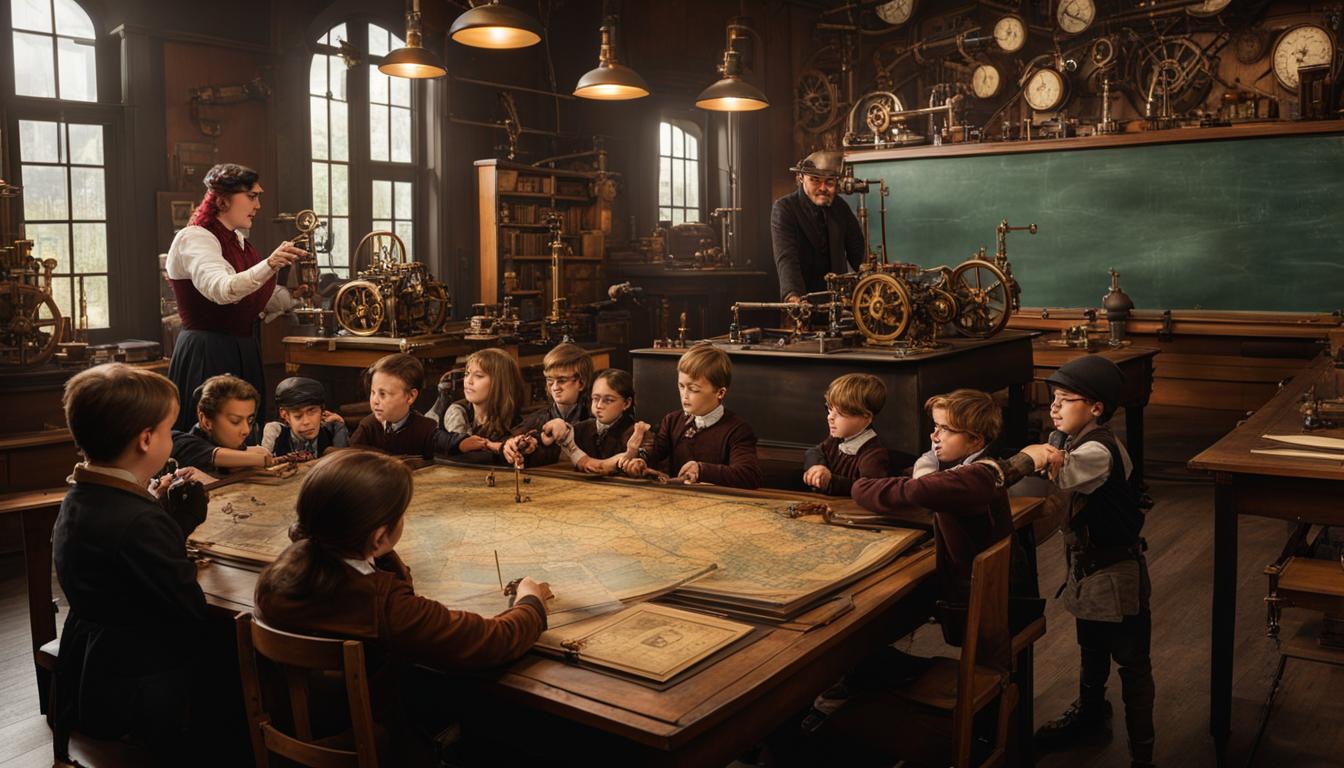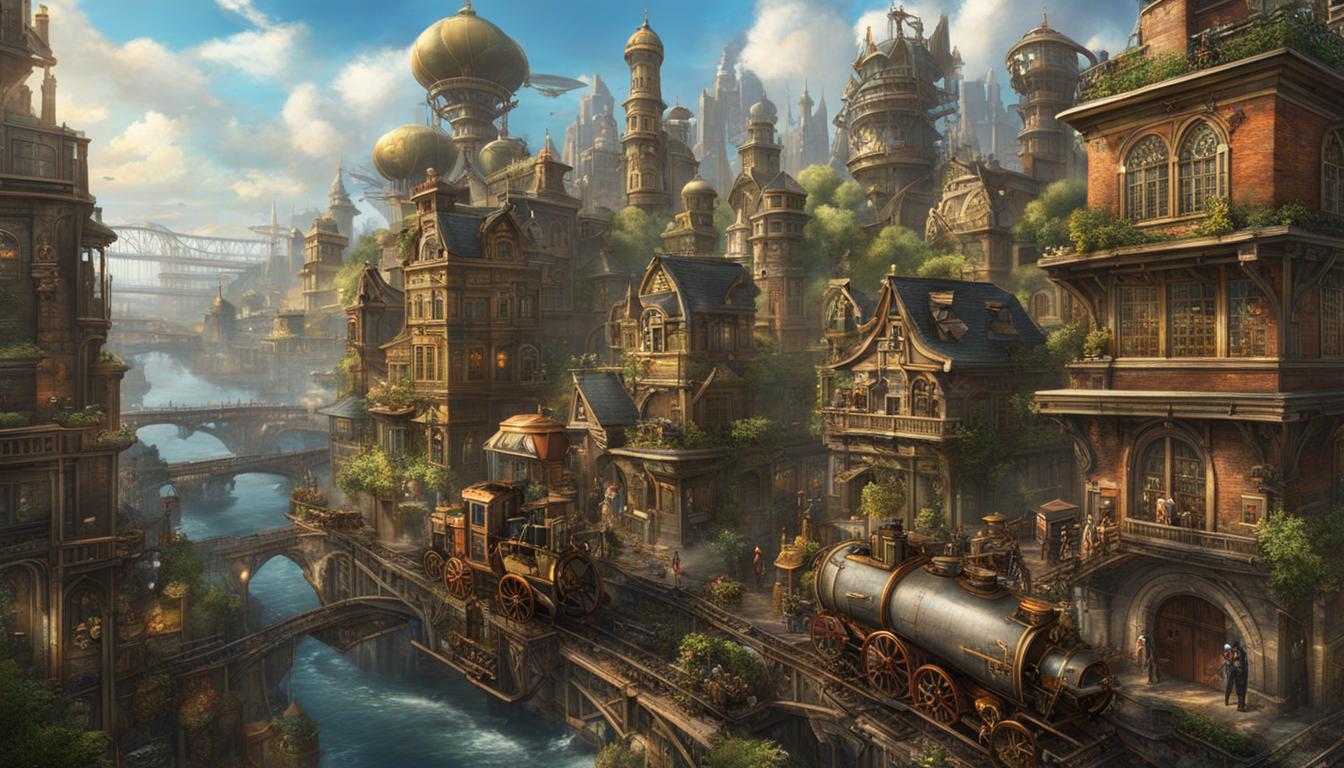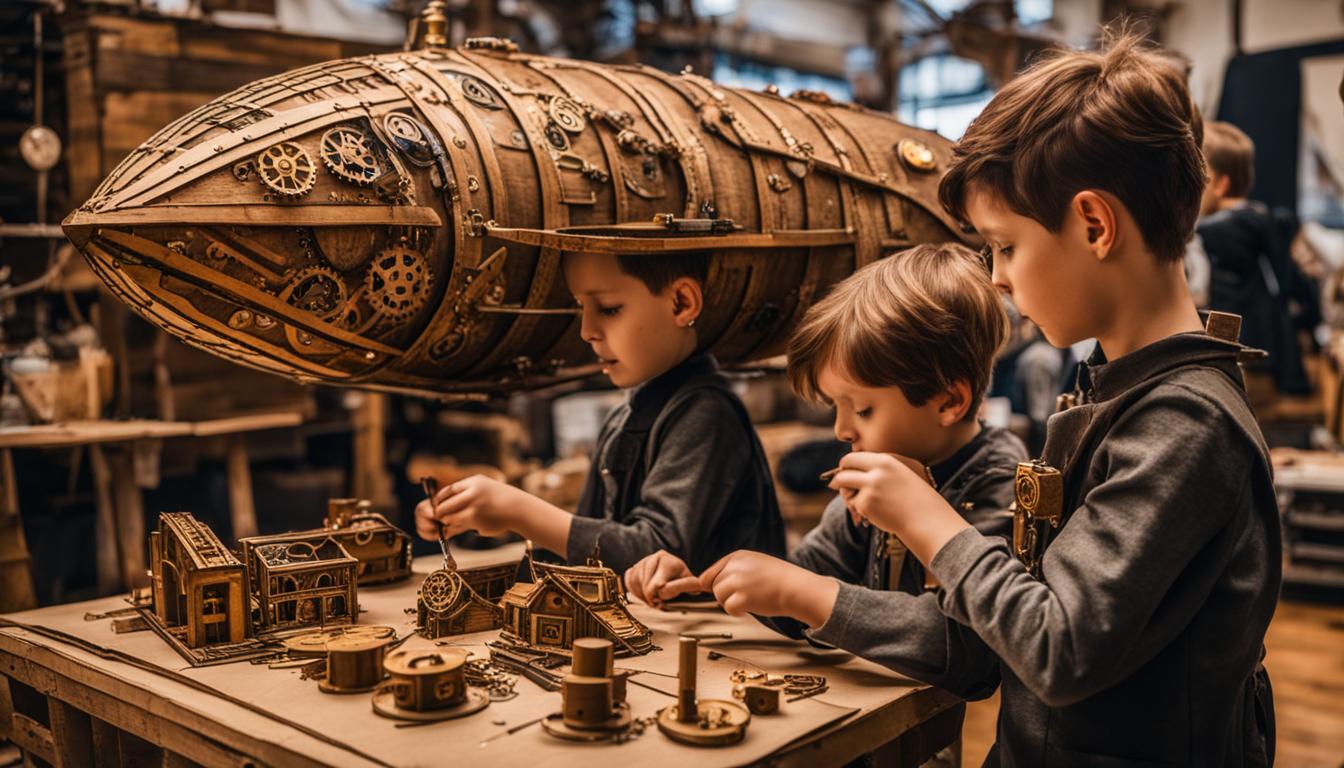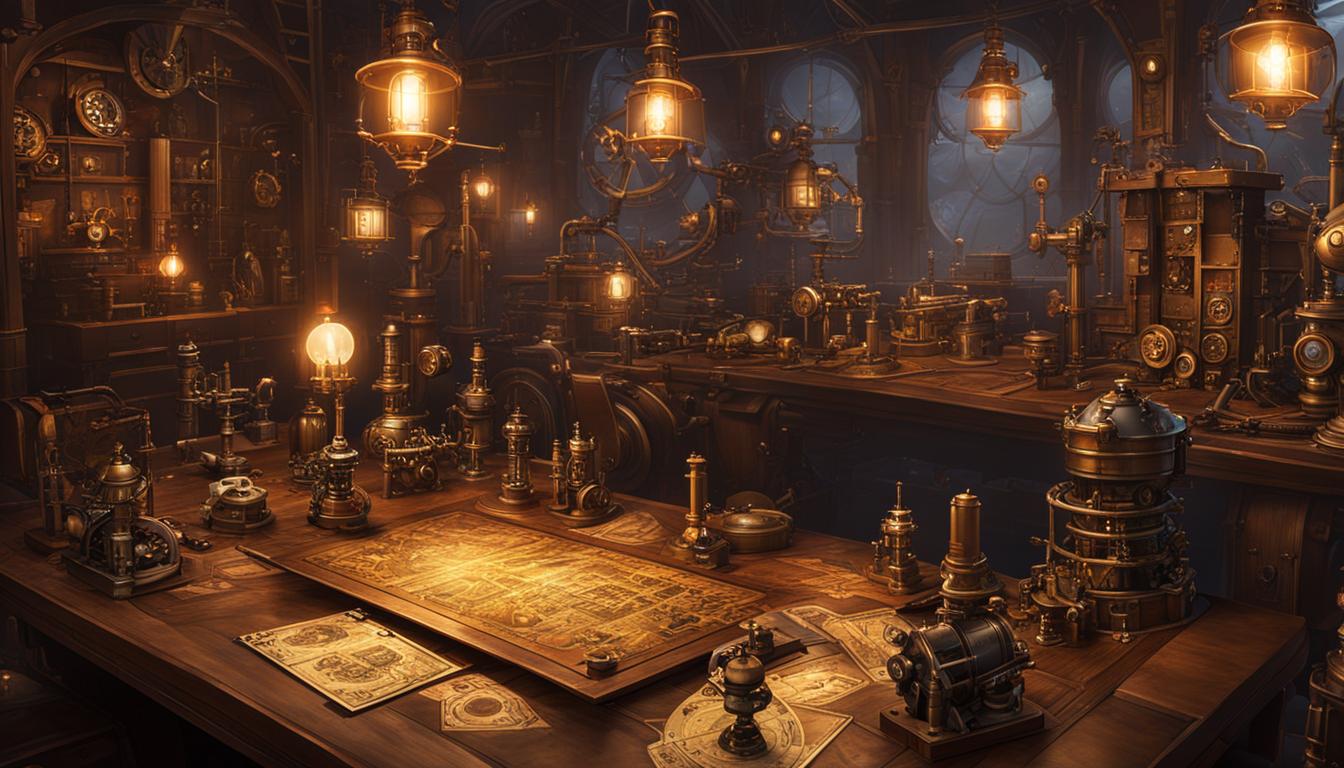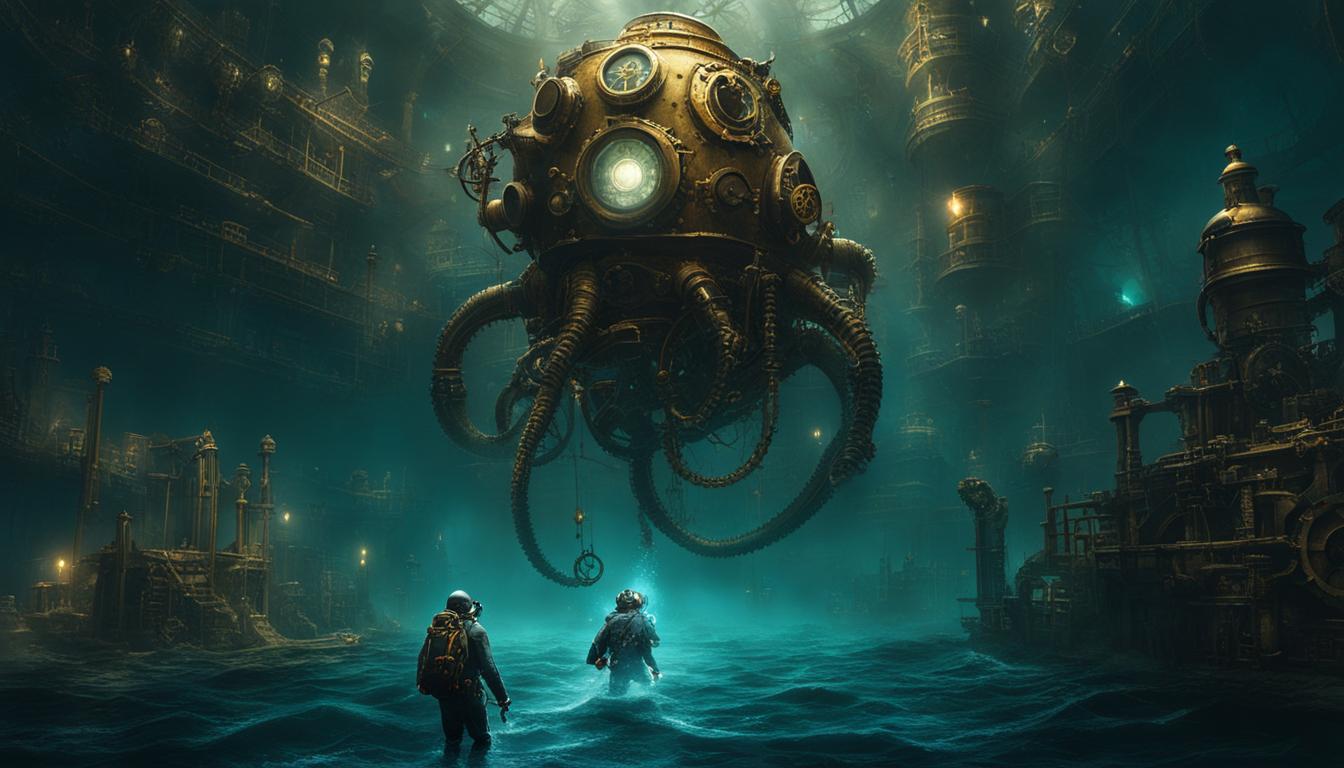Steampunk, an artistic movement that fuses Victorian-era aesthetics with steam-powered technology and elements of science fiction and fantasy, presents a captivating world for children to explore. By immersing young minds in the historical context, aesthetics, and storytelling of steampunk, educators can provide engaging and enriching experiences that foster creativity and critical thinking.
Introducing children to steampunk opens a portal to a world where gears turn, airships soar, and adventure awaits. By integrating elements of steampunk into the classroom, educators can ignite curiosity and inspire children to embark on a journey through time and imagination.
Key Takeaways:
- Teaching steampunk to children can unlock their creativity and critical thinking skills.
- Exploring the historical context and origins of steampunk is essential for a comprehensive understanding.
- Engaging children with steampunk aesthetics helps them appreciate the unique visual style.
- Integrating steampunk into various subjects can create a dynamic and engaging learning experience.
- Encouraging children to create their own steampunk worlds cultivates individuality and imagination.
Understanding Steampunk Aesthetics
Steampunk aesthetics are a visual delight that captivate both children and adults alike. Introducing children to the enchanting world of steampunk can be a fascinating journey into a realm where Victorian fashion, ornate machinery, and brass fittings reign supreme. Through engaging activities and hands-on experiences, children can explore the unique style and storytelling elements that define steampunk.
One of the best ways to introduce steampunk aesthetics to children is through captivating images. Showcasing illustrations, photographs, and artwork that exemplify steampunk fashion, gadgets, and landscapes can ignite their imagination and pique their interest. Encourage them to observe and discuss the intricate details, such as the gears, cogs, and intricate designs that make up the steampunk aesthetic.
Additionally, hands-on crafting activities can immerse children in the world of steampunk. Provide materials such as cardboard, gears, and metallic paints, and guide them in creating their own steampunk-inspired accessories or artifacts. This not only enhances their understanding of the aesthetic but also nurtures their creativity and craftsmanship skills.
Fostering a Sense of Wonder
Introducing children to steampunk aesthetics is not only about the visual aspects but also the underlying spirit of creativity and critical thinking. By exploring the concept of alternate history, where steam power dominates, children are encouraged to think beyond the confines of reality and question societal norms. This sparks their curiosity and allows them to envision and reimagine different possibilities, ultimately fostering a sense of wonder and imagination.
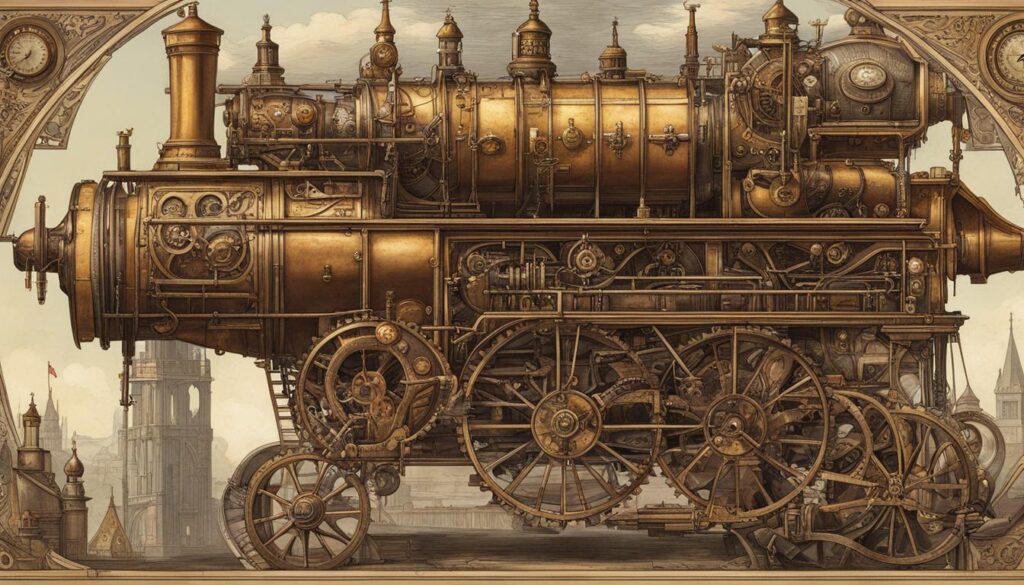
Whether through hands-on activities, captivating visuals, or discussions about alternate history, the aim is to create an engaging and thought-provoking learning experience for children. By immersing them in the captivating world of steampunk aesthetics, educators can ignite their creativity, expand their horizons, and cultivate a lifelong appreciation for the uniqueness of this extraordinary subculture.
Exploring Steampunk History
To fully understand steampunk, it is essential for children to explore its fascinating historical roots. By delving into the origins of this intriguing subculture, young minds can gain a deeper appreciation for its unique blend of history, science fiction, and fantasy. Through engaging lessons, teachers can introduce children to influential authors of 19th-century science fiction, such as Jules Verne, H.G. Wells, and Mary Shelley, who helped shape the foundation of steampunk storytelling.
Steampunk’s historical context extends beyond literature and into the realm of technology. Educators can highlight the significance of steam-powered machinery during the Industrial Revolution and its profound impact on society. By discussing the various inventions and transportation systems powered by steam engines, children can grasp the revolutionary advancements that paved the way for the fantastical technologies often depicted in steampunk narratives. This exploration of steam power can foster a sense of wonder and curiosity among young learners.
Moreover, steampunk is heavily influenced by the social and cultural aspects of the Victorian era. By engaging children in conversations about the values, norms, and aesthetics of this historical period, educators can help them understand how the Victorian era continues to shape and inspire the steampunk subculture. From the ornate fashion of the time to the intricate brass fittings found in steampunk designs, the cultural nuances of the Victorian era provide a rich tapestry for children to explore.
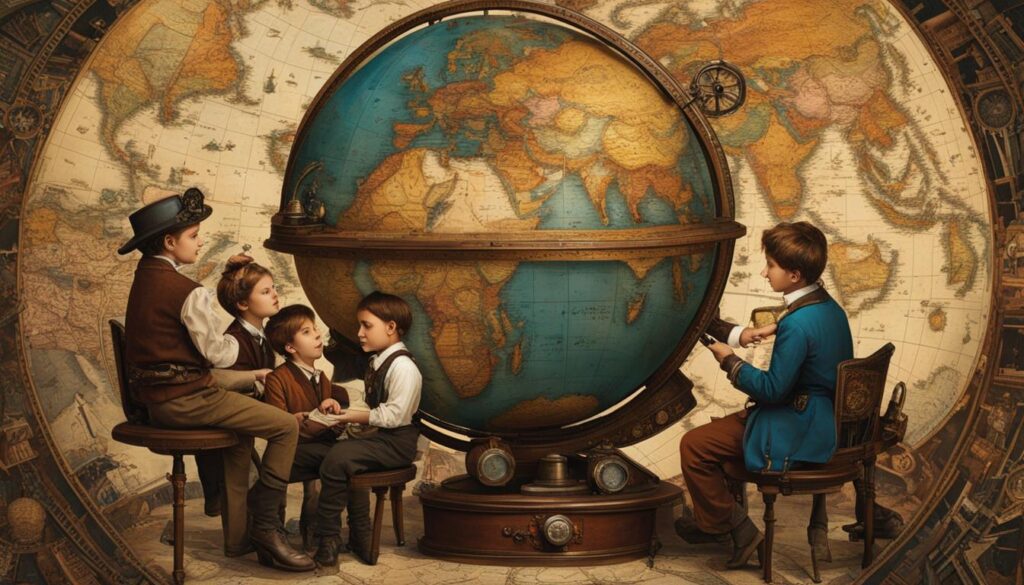
Introducing children to the historical context of steampunk encourages them to think critically about the intersection of history, technology, and imagination. By igniting their curiosity and fostering a love for both the past and the fantastical, educators can empower young minds to embrace the wonder and creativity that steampunk embodies.
Fostering Creativity through Steampunk Education
Steampunk education goes beyond just teaching children about a fascinating subculture. It is a chance to unleash their creative potential and inspire them to think outside the box. By incorporating steampunk into various subjects, such as English, art, science, and history, educators can create a dynamic and engaging learning experience.
One way to foster creativity is by immersing children in the world of steampunk literature. Encourage them to read books that transport them to a time where steam-powered contraptions rule. These stories not only captivate young minds, but also stimulate their imagination and critical thinking skills.
Another avenue for creativity is through visual arts. Exposing children to steampunk-inspired art can inspire them to express their own ideas through drawing, painting, or even sculpting. The intricate designs and ornate machinery of steampunk aesthetics provide a fertile ground for young artists to explore.
Furthermore, screening steampunk-inspired films and TV shows can offer a multisensory learning experience. Kids can observe the visual elements, listen to the captivating soundtracks, and delve into the stories that unfold in a world of steam and imagination. This exposure can ignite their curiosity and encourage them to think critically about the themes presented.
In conclusion, educational steampunk activities for kids and the availability of steampunk learning materials can be the key to unlocking their creativity. By embracing the steampunk aesthetic and its historical roots, educators can empower children to develop their own unique ideas and tastes. So, let’s dive into the fantastical world of steampunk and watch the sparks of imagination ignite!
FAQ
How can I teach children about steampunk?
Start by exploring the historical context of the subculture, including its origins in 19th-century science fiction literature. Introduce them to steampunk aesthetics, steam-powered technology, alternate history storytelling, and the blending of science fiction and fantasy elements.
What are some practical ways to introduce steampunk to children?
You can incorporate steampunk literature into the classroom, expose students to steampunk art and media, and encourage individual creativity through writing, drawing, or crafting.
What are the key characteristics of steampunk aesthetics?
Steampunk aesthetics include elements of Victorian fashion, ornate machinery, and brass fittings. It’s a visual style that combines the elegance of the past with the excitement of futuristic technology.
How can I teach children about alternate history in steampunk?
Introduce them to the concept of alternate history and explain how steampunk stories often present a reimagined version of the past where steam power reigns supreme. Encourage critical thinking about societal norms and how they could be reimagined in a steampunk world.
What are the historical roots of steampunk?
Steampunk has its roots in 19th-century science fiction literature. Influential authors such as Jules Verne, H.G. Wells, and Mary Shelley laid the foundation for steampunk storytelling. It’s important to emphasize the role of steam-powered technology in shaping the Industrial Revolution and its impact on society.
How can I foster creativity through steampunk education?
Incorporate steampunk into various subjects such as English, art, science, and history. Encourage reading steampunk literature, exploring steampunk art, and watching steampunk-inspired films and TV shows. Encourage students to create their own steampunk worlds through writing, drawing, or building models.

